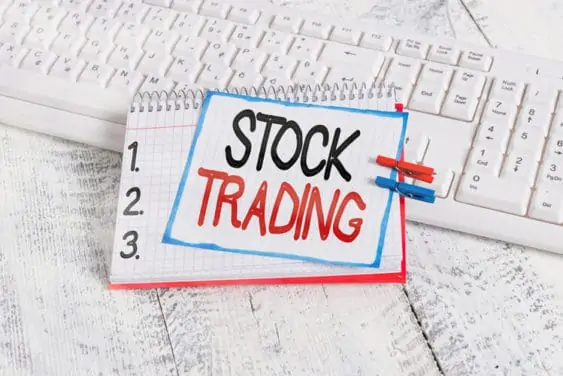Generally speaking, most investors categorize stocks into one of two categories: growth and value. Growth stocks are companies that have the potential to exhibit rapid growth in the future.
These stocks are often priced with their future potential in mind. This can lead to high price multiples and increased volatility in the stock’s price. If you want to invest in growth assets, you’ll need to have a higher risk tolerance.
But the upside for growth stocks is why people like to invest in them in the first place. Growth sectors like technology or electric vehicles have provided massive returns over a short period of time. Value stocks tend to see less volatility and lower overall returns.
Growth ETFs are a way to invest in a basket of growth stocks in one convenient fund. These are often also referred to as high-growth funds or aggressive growth funds.
In this article, I’ll cover my ten picks for the best growth ETFs in Canada for 2024.
Best Growth ETFs in Canada for 2024
Here are the ten best growth ETFs in Canada that I will be discussing in this article:
- Vanguard Growth ETF Portfolio (VGRO)
- iShares Canadian Growth Index ETF (XCG)
- TD Global Technology Leaders Index ETF (TEC)
- Vanguard S&P 500 Index ETF (VFV)
- BMO NASDAQ 100 Equity Index ETF (ZNQ)
- BMO Clean Energy Index ETF (ZCLN)
- Horizons Global BBIG Technology ETF (BBIG)
- iShares Core Growth ETF Portfolio (XGRO)
- Horizons Global Semiconductor Index ETF (CHPS)
- Ark Innovation ETF (ARK.K)
All facts and figures in this article are accurate as of 2022.
1. Vanguard Growth ETF Portfolio
Here are some key facts about this ETF:
- Ticker Symbol: TSE: VGRO
- MER: 0.24%
- Total AUM: $3.339 billion
- Number of Holdings: 7
- Distribution Yield: 2.31%
- Distribution Frequency: Quarterly
- 1-Year Return: -11.8%
- Inception Date: January 25, 2018
VGRO is a Vanguard Canada growth ETF that trades as a portfolio fund on the TSX. This means that rather than holding specific stocks, VGRO holds a basket of other Vanguard ETFs.
This fund holds 7 different Vanguard ETFs that are composed of a total of 13,728 stocks and 18,087 bonds. The largest holdings are the U.S. Total Market Index ETF and the FTSE Canada All Cap Index ETF.
While it takes a portfolio approach, 80% of VGRO’s holdings are large-cap stocks and 44% are US-listed stocks. This means a large proportion of the portfolio is in mega-cap American tech stocks.
Here are some key facts about this ETF:
- Ticker Symbol: TSE: XCG
- MER: 0.55%
- Total AUM: $68 million
- Number of Holdings: 39
- Distribution Yield: 1.96%
- Distribution Frequency: Quarterly
- 1-Year Return: -11.34%
- Inception Date: November 6th, 2006
XCG is a Blackrock iShares growth ETF that focuses on medium and large-cap Canadian companies that are expected to have outsized growth in the future.
The largest holdings in XCG are Canadian National Railway, Canadian Pacific Railway, and Brookfield Asset Management, which account for 28% of the allocations in the fund.
This ETF also has a 13% allocation to the Information Technology sector, which includes growth stocks like Constellation Software and Shopify.
Here are other attractive iShares ETFs.
3. TD Global Technology Leaders Index ETF
Here are some key facts about this ETF:
- Ticker Symbol: TSE: TEC
- MER: 0.39%
- Total AUM: $1.2 billion
- Number of Holdings: 282
- Distribution Yield: 0.82%
- Distribution Frequency: Quarterly
- 1-Year Return: -23.50%
- Inception Date: May 6th, 2019
TEC is a TD Global Asset Management growth ETF that trades on the TSX. It focuses on global large-cap tech stocks, with an 85.10% weight given to US-listed stocks.
The largest holdings in TEC are Apple, Microsoft, Amazon, Alphabet, and Tesla. The largest Canadian holding is Shopify.
4. Vanguard S&P 500 Index ETF
Here are some key facts about this ETF:
- Ticker Symbol: TSE: VFV
- MER: 0.09%
- Total AUM: $6.4 billion
- Number of Holdings: 505
- Distribution Yield: 1.34%
- Distribution Frequency: Quarterly
- 1-Year Return: -8.21%
- Inception Date: November 2nd, 2012
VFV is a Vanguard growth ETF that tracks the benchmark S&P 500 index to the best of its ability, before fees and expenses. J
Why is the S&P 500 considered a growth investment? Historically it has returned nearly 10% on an average annual basis.
The largest weighted holdings in the S&P 500 are mega-cap tech stocks like Apple, Microsoft, Amazon, and Alphabet.
5. BMO NASDAQ 100 Equity Index ETF
Here are some key facts about this ETF:
- Ticker Symbol: TSE: ZNQ
- MER: 0.39%
- Total AUM: $199 million
- Number of Holdings: 103
- Distribution Yield: 0.16%
- Distribution Frequency: Annually
- 1-Year Return: -18.32%
- Inception Date: February 15, 2019
ZNQ is a BMO Global Asset Management growth ETF focusing on the high-growth NASDAQ 100 index. It still trades on the TSX and provides Canadian investors with exposure to US stocks without paying exchange fees.
This ETF emphasizes growth, as its dividend yield is at 0.16% and is only paid once per year.
The top holdings in ZNQ are Apple, Microsoft, Amazon, Tesla, and Alphabet.
6. BMO Clean Energy Index ETF
Here are some key facts about this ETF:
- Ticker Symbol: TSE: ZLCN
- MER: 0.40%
- Total AUM: $83.5 million
- Number of Holdings: 102
- Distribution Yield: 0.90%
- Distribution Frequency: Annually
- 1-Year Return: -1.70%
- Inception Date: January 20th, 2021
ZCLN is another BMO Global Asset Management growth ETF that focuses on investing in clean energy companies with a high ESG or Environmental, Social, and Governance rating.
Are clean energy stocks considered growth? Absolutely. As the world shifts away from fossil fuel reliance, clean energy solutions will continue to be adopted globally.
The top holdings in ZCLN are Enphase Energy, Iberdrola SA, and Consolidated Edison Inc. ZCLN has the highest allocation to the semiconductor industry with a 23% weight and a 47% weight to US-listed stocks.
7. Horizons Global BBIG Technology ETF
Here are some key facts about this ETF:
- Ticker Symbol: TSE: BBIG
- MER: 0.55%
- Total AUM: $3.1 million
- Number of Holdings: 39
- Distribution Yield: 10.2%
- Distribution Frequency: Annually
- 1-Year Return: -27.20%
- Inception Date: April 12, 2021
BBIG is a new ETF from Horizons that focuses on global technology companies with a 64.7% allocation to US-listed stocks.
This ETF has a non-traditional sector allocation regarding growth or technology funds. The four sectors that are represented are biotechnology, secondary batteries, gaming, and the internet, hence the acronym BBIG.
For BBIG, the largest holdings are Posco Chemical Co Ltd, Livent Corp, Sarepta Therapeutics Inc, and Albemarle Corp.
Here are some key facts about this ETF:
- Ticker Symbol: TSE: XGRO
- MER: 0.20%
- Total AUM: $1.4 billion
- Number of Holdings: 8
- Distribution Yield: 1.54%
- Distribution Frequency: Quarterly
- 1-Year Return: -12.21%
- Inception Date: June 21, 2007
The second Blackrock iShares growth ETF on my list is XGRO. Similar to VGRO from Vanguard, this fund holds a basket of other iShares ETFs rather than individual stocks.
This ETF holds a total of 8 different ETFs, which hold an aggregate of 20,627 different stocks and bonds. The iShares Core S&P Total US Stock Market Index ETF (ITOT) has the highest weight in XGRO with a 37% allocation.
For XGRO, the highest individual stock holdings across all of the ETFs include Apple, Microsoft, Royal Bank of Canada, and Toronto Dominion Bank.
9. Horizons Global Semiconductor Index ETF
Here are some key facts about this ETF:
- Ticker Symbol: TSE: CHPS
- MER: 0.55%
- Total AUM: $23.9 million
- Number of Holdings: 49
- Distribution Yield: 0.01%
- Distribution Frequency: Annually
- 1-Year Return: -34.12%
- Inception Date: June 21, 2021
CHPS is a Horizons growth ETF that focuses on the global semiconductor industry. Semiconductors are widely used in nearly every technology product, from smartphones to televisions to electric cars.
This fund holds 49 of the largest semiconductor companies in the world. It holds a 94% allocation to the information technology sector with a 66.4% allocation to US-listed stocks.
The largest holdings in the CHPS ETF are Taiwan Semiconductor Manufacturing Company Ltd ADR, ASML Holding NV, NVIDIA Corp, and Broadcom Inc.
10. Ark Innovation ETF
Here are some key facts about this ETF:
- Ticker Symbol NYSEARCA:ARK.K
- MER: 0.75%
- Total AUM: $7.5 billion USD
- Number of Holdings: 33
- Distribution Yield: N/A
- Distribution Frequency: N/A
- 1-Year Return: -65.6%
- Inception Date: October 30, 2014
The final growth ETF on my list and the only US-listed ETF is the flagship fund from Cathie Wood’s Ark Invest portfolio. The Ark Innovation portfolio focuses on high-growth companies, primarily in the tech industry.
ARKK’s top holdings include Zoom Communications, Tesla, Roku, Block, and Coinbase. It has a 94% allocation to North American-listed stocks.
Ark Invest offers several other growth-oriented ETFs like the Ark Autonomous Tech and Robots ETF (ARKQ), Ark Genomic Revolution ETF (ARKG), and Ark Fintech Innovation ETF (ARKF).
Looking for stock and ETF picks? Check out this Motley Fool offer.
Stock Advisor Canada

Unlimited access to expert stock recommendations
Almost doubled the S&P/TSX Index over last 9 years
New stock picks every month
50,000+ members
$1.90 weekly (66% discount)
How To Buy Growth ETFs in Canada in 2024
Interested in adding some growth ETFs to your portfolio? Luckily for you, they are available at most Canadian discount brokerages. All you need to do is follow these steps to begin investing in the future!
- Sign up for a free brokerage account at a Canadian discount brokerage
- Add funds to your account
- Look up the Canadian growth ETFs that you are interested in buying
- Use either a market order to get the current price or set your own buy price with a limit order
- Add any of the best growth ETFs in Canada to your portfolio
Qtrade

Up to $150 sign-up bonus
Trade stocks, ETFs, options, bonds, etc.
Excellent platform for newbies and seasoned investors
Competitive trading fees
Excellent customer service
Questrade

Trade stocks, ETFs, options, FX, bonds, CFDs, mutual funds, etc.
Get $50 trade credit with $1,000 funding
Low and competitive trading fees
No quarterly inactivity fees
Access to advanced tools and trading data
Top platform for advanced traders
Transfer fees waived
What are Growth ETFs?
You’ve probably realized now that growth ETFs in Canada are looking at emerging industries like technology. You won’t find many blue-chip stocks which account for a majority of the market cap on the TSX.
Since most large-cap technology stocks are listed in the US, growth ETFs do provide a way to gain exposure to US-listed stocks while still investing in Canadian dollars.
There is an element of repetition as the mega-cap tech stocks in the US account for such a large weight in indices like the NASDAQ and the S&P 500.
You will also notice there is little emphasis on dividends when it comes to growth funds. Typically with growth investments, we exchange stability and dividends with the potential for outsized future growth.
Downsides of Growth ETFs
2022 was an excellent example of the downside of growth ETFs. When the economy is volatile and interest rates rise, the forward-looking performance of growth companies declines.
Often, growth companies rely on taking on debt to rapidly expand and scale operations. With higher interest rates, that debt becomes more expensive to pay back and eats into the company’s bottom line.
Finally, growth ETFs are better served for younger investors with long-term investing horizons. Investors closer to retirement will likely benefit from stability and steady dividends from value ETFs.
Methodology for Choosing Growth ETFs in Canada
When you are looking for growth ETFs to invest in, traditional metrics like PE Ratio are not as useful. Ideally, you want to invest in funds that hold companies that have exhibited steady growth from quarter to quarter and on a year-over-year basis.
Other things I use when choosing ETFs apply to growth and value funds. Always look for a low MER so that you pay less in management fees. This can make a significant difference over the long term.
You aren’t necessarily looking for distributions with growth ETFs, so what else is there to look for? The annual performance of the fund and a reputable ETF provider like Vanguard or iShares also helps.
Finally, you’ll want to ensure your new growth ETFs do not overlap with existing investments. If you own a technology-based ETF, an S&P 500 ETF, a NASDAQ ETF, and a total markets ETF, chances are you are holding most of the same five big tech companies. Diversify your holdings and allocate growth ETFs to your portfolio based on your risk appetite and investing horizon.






